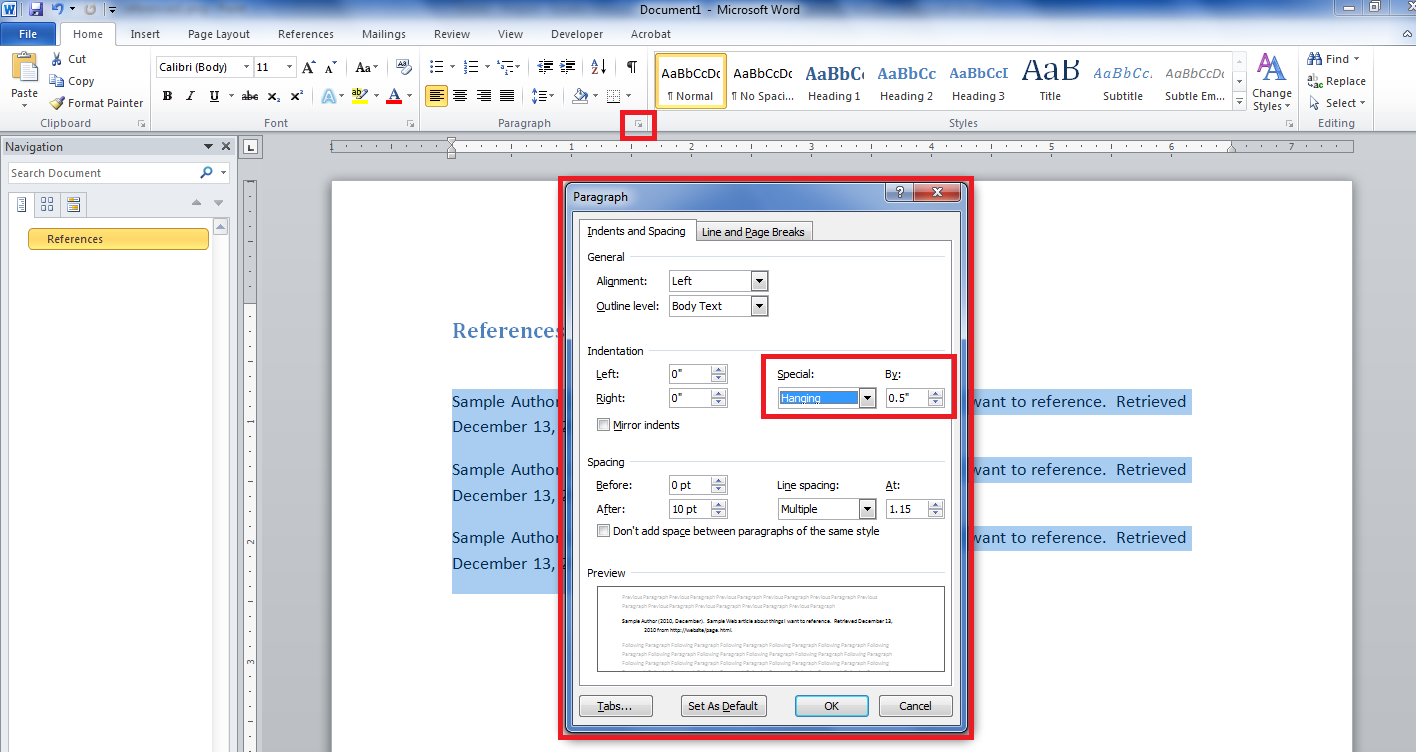

Each press of the shortcut indents the hang one more tab stop. If there are no explicit tab stops in your paragraph, Word will indent to the next default tab stop, which is usually one-half inch. Click Ctrl+T, which will hang your paragraph to the next tab stop.If you like to save time and keystrokes as I do, you might like to learn to format a paragraph to use a hanging indent just by using a keyboard shortcut. It keeps all your information aligned and makes it much easier for your reader to access. Hanging indents are common formatting in many documents and for good reason. Unfortunately, there is no “live preview” when changing the indent size, so if you need to adjust it, you will have to apply it and then go back into the Paragraph window to readjust it if it doesn’t look right.A hanging indent is created when the first line of your paragraph starts at the left margin but the second and subsequent lines are indented from the left margin. Also, if you do it this way, you can get a feel for how the whole bibliography section looks instead of just looking at one citation in isolation. This way, you only need to perform the action once, instead of once for each citation. Go to the ruler bar and select the Hanging line. Under the Indentation section, choose Hanging. Place cursor in the paragraph where you want to create a hanging indent. The quick way to apply a hanging indent to all your citations is to type them all out, select them all and then apply the indent. Click the small dialogue box button to edit formatting options. The hanging indent is applied at paragraph level, so each citation needs just one paragraph. Select an option: Enter the indent amount or use the.

Click the arrow next to Special, and choose Hanging. Note: One-half inch is the typical measurement for indenting a hanging paragraph. Under Indentation, in the Before text box, click the arrow to approximately. Just let the citation flow over as many lines as is needed so that it is contained by one paragraph. First Line and Hanging Indents Click the Special list arrow. Click the Home tab, and then click the Paragraph dialog box launcher. Click on the Home tab at the top left section. When citing sources, it’s important to write each citation without inserting any hard returns (using the enter key) or any tabs. How do you create a hanging indent in Word 2010 Highlight the paragraph or block of text you want to format. You will need to use hanging indents if you ever need to write a paper that includes source citations (each citation needs its own hanging indent). the paragraph in which the cursor is placed. Note that the hanging indent is only applied to the current paragraph i.e. Or, select multiple paragraphs if you want to create several. To adjust or remove a hanging indent that is already there, just repeat the steps above: click the Paragraph dialogue launcher and then change the Special selector or adjust the indent size. Place your cursor inside the individual paragraph in which you want to create a hanging indent. You can either keep the default setting for the size of the indent, or you can adjust it by typing a new number into the box or by clicking on the up and down arrows to the right. When the Paragraph window opens, go down to the Special selector and choose hanging. On the Home tab, click the dialogue launcher for the Paragraph group. To create a hanging indent in Word, place the cursor anywhere in the paragraph. Whatever you do, don’t create a hanging indent by pressing the space key to create spaces, or even by tabbing across the page. Typically, hanging indents are used for numbered and bulleted lists, but they have other uses too (see later). It’s called a hanging indent, because the first line hangs out over the rest of the paragraph. If there are no explicit tab stops on the text, Word will automatically indent. Position the cursor on the first line of the paragraph. Highlight the text/paragraph and Press on Ctrl+T to create a new hanging indent. Hanging indent is used for formatting your document, whether creating bibliographies o Almost.
#How to do a hanging indent on microsoft word how to
Also known as a hanging paragraph, a hanging indent refers to a paragraph that has all lines except the first one indented. Launch Word and open the document to which you want to add indents. In this video, we'll teach you how to use the hanging indent option in Microsoft Word.


 0 kommentar(er)
0 kommentar(er)
